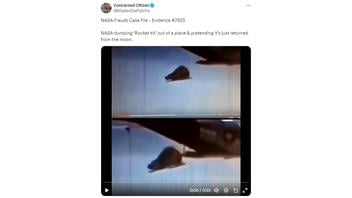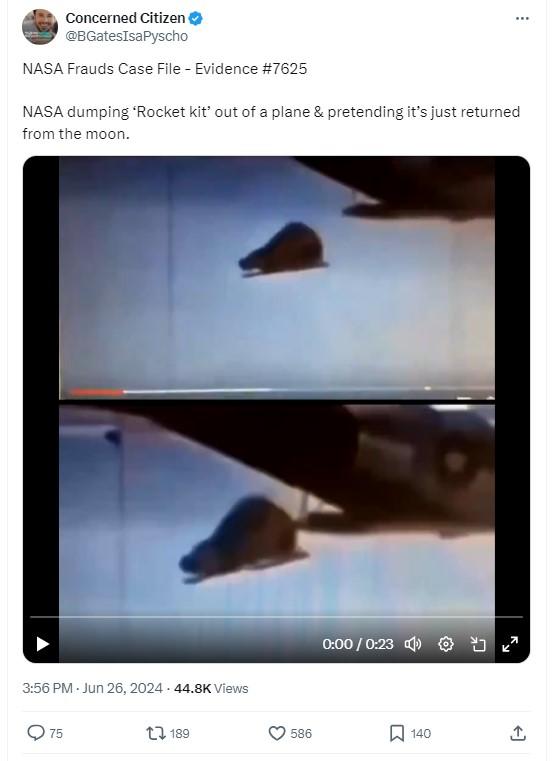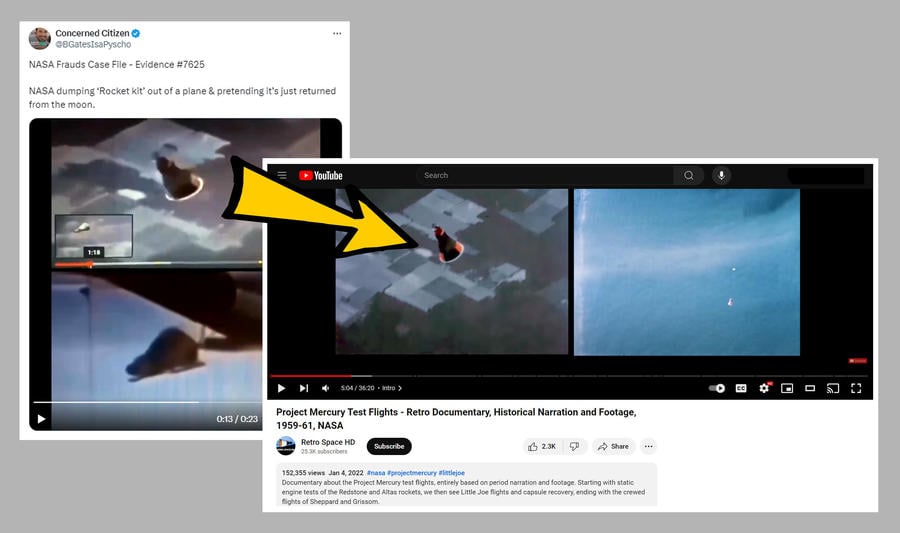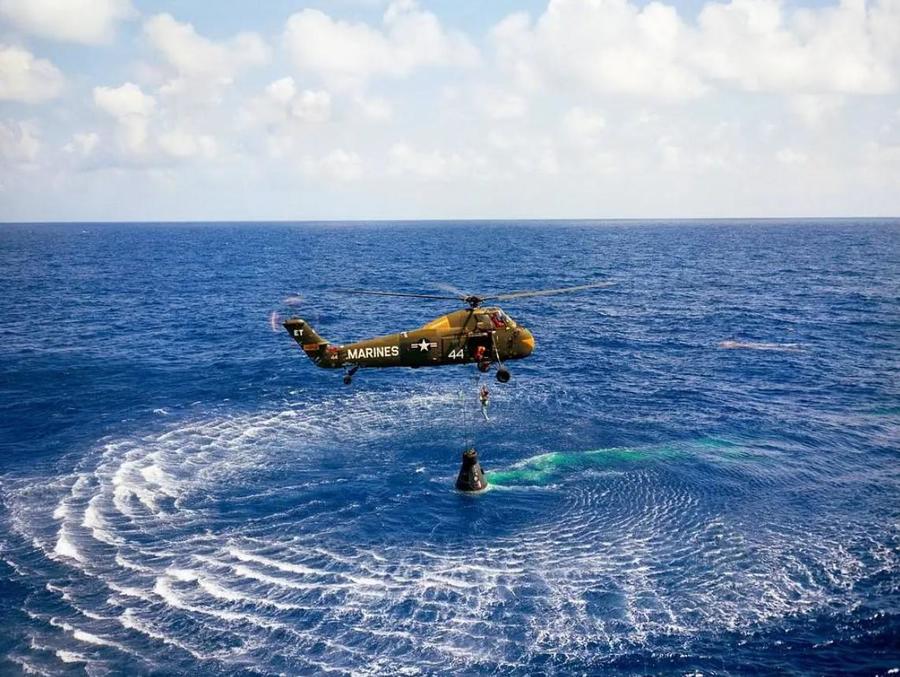
Did NASA secretly drop a manned space capsule out of a plane in order to stage a hoax return of astronauts from outer space? No, that's not true: The footage that shows a space capsule sliding out of the back of a C-130 cargo plane was not part of a staged hoax. This was one of several drop tests conducted during the early stages of NASA's Project Mercury in October 1958. The splashdown pictured could not have been used to stage a hoax return from space because the capsule was not manned. The test happened years before the first manned flight in 1961.
The claim appeared in a post (archived here) on X on June 26, 2024. It was captioned:
NASA Frauds Case File - Evidence #7625
NASA dumping 'Rocket kit' out of a plane & pretending it's just returned from the moon.
This is how the post appeared on X at the time of writing:
(Source: X screenshot taken on Thu Jun 27 16:38:30 2024 UTC)
A reverse image search for a still frame from this video yielded problematic results (Yandex example here). Conspiracy channels have appropriated the footage with their own narrative attached. One still image of the capsule dropping from the plane on a conspiracy blog was marked, "MERCURY DROP TEST FOOTAGE USED FOR ILLUSTRATION." That was enough information to find the documentary that includes that footage.
In the Lead Stories composite image below, a screenshot from the blurry video posted on X (left), at 13 seconds in, is compared to the 5:04-minute mark of a video posted by Retro Space HD (right). The YouTube video titled, "Project Mercury Test Flights - Retro Documentary, Historical Narration and Footage, 1959-61, NASA" was posted on January 4, 2022. The years 1959-61 included in the title refer to the later Project Mercury tests, both unmanned and manned, launched with rockets and discussed later in the 36:20-minute-long video. This footage with the drop test appears at the start of the video and dates to October 1958. The video begins with the narrator explaining:
Project Mercury was born October 7th 1958. Program approval was granted one week after the establishment of the new National Aeronautics and Space Agency. Program mission: Put a man into space, orbit him around the Earth, and recover him safely.
(Source: Lead Stories composite image with X and YouTube screenshots taken on Thu Jun 27 16:38:30 2024 UTC)
The narration accompanying this segment of footage explains the purpose of the drop tests, starting at 4:19 in the video:
These boilerplate capsules have been used to develop the parachute system, to validate recovery procedures, to check the functioning of the escape system and to determine the motions and heating of the capsule during re-entry. Large cargo airplanes were used in the development of the parachute system. Full-scale boilerplate capsules were dropped from Air Force C-130 aircraft at high altitudes. The capsule slides out of the plane's cargo door on a sled. As soon as it is clear of the aircraft, the sled is released and after a period of free fall the lid on the antenna canister is released. Then the small drogue parachute is ejected by a mortar charge. This parachute reduces the capsule's swinging motions in the early stages of the descent. At a predetermined altitude the small parachute pulls the top antenna housing away from the capsule and automatically deploys the main descent parachute. The capsule then descends toward the water. The main descent parachute is a 63-foot ring sail type cargo parachute. Upon impact on the water the parachute is released from the capsule by a small explosive charge to avoid dragging the capsule in the wind. The airplane drop tests also provide an opportunity to exercise the various recovery devices and to further develop and improve recovery operational procedures.
The Retro Space HD YouTube video has this disclaimer caption:
The footage was AI remastered on some segments, besides the usual color correction. Ambient audio was recreated based on historical elements.
Sequences are shown in proper mission context as much as possible.
Research, cleanup, editing, and processing by Retro Space HD.
Many Project Mercury documents are cataloged in the 2008 NASA History Series book "Exploring the Unknown Selected Documents in the History of the U.S. Civil Space Program" (PDF page 154). A memorandum, titled, "Status Report No. 1, Manned Satellite Project," dated December 9, 1958, was written by George M. Low, the program chief of manned space flight at NASA. The document is in the National Archives collection in Forth Worth, Texas. Low wrote:
4. Flight Test Operations
a. Several full-scale dummy capsules have been dropped from a C-130 airplane. Purpose: to check subsonic stability and parachute deployment. Initial results: parachute deployment is satisfactory.
b. The first Atlas Flight (Atlas C) is scheduled for June or July 1959. Primary purpose: to check ablation heat shield.
The first manned space flight was completed by Soviet cosmonaut Yuri Gagarin on April 12, 1961. The first American astronaut in space was Alan Shepard, who made a suborbital flight on May 5, 1961. A photo essay on nationalreview.com documents Shepard's flight on the Mercury-Redstone 3: Freedom 7 mission. One photo (below) shows Shepard as he was lifted from the capsule by a Marine helicopter. Other photos show him on board U.S. Navy carrier Lake Champlain with the capsule.
(Source: nasa.gov)
The caption's facetious reference to "NASA Frauds Case File - Evidence #7625" does not point to an actual case file.
Additional Lead Stories fact checks on claims about NASA can be found here.

















